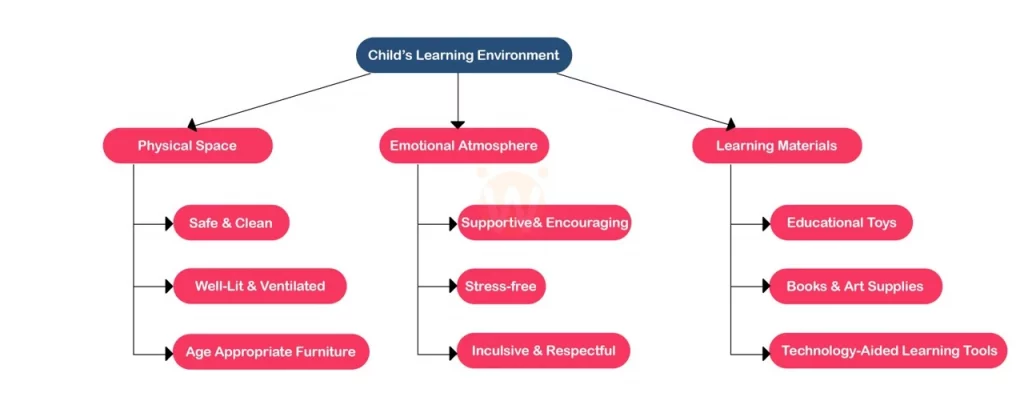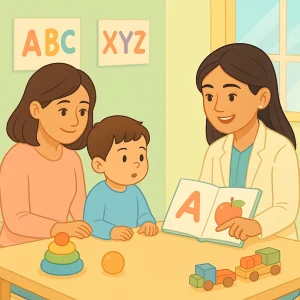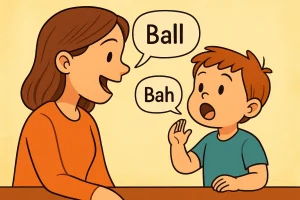Guide to Children’s Artistic Development in Drawing & Writing
By Prapoorna M
Last Updated: December 21, 2023
The journey of artistic and cognitive development in children is a fascinating one, marked by significant milestones that guide parents and educators in providing age-appropriate activities. Understanding the sequential progression of imitating and copying shapes is crucial for creating a conducive learning environment. This article explores children’s drawing development, offering insights into the cognitive growth of children. Additionally, it provides comprehensive guidelines for optimizing a child’s learning environment, emphasizing the physical setup, posture, focus, and sensory prerequisites necessary for effective learning.
Developmental Stages of Drawing
As children grow, their ability to imitate and copy shapes evolves in a predictable sequence. This progression serves as a roadmap for parents and educators, enabling them to tailor activities that align with a child’s developmental stage. Let’s delve into the key milestones:
Age 2: Imitating Simple Vertical Lines
At this stage, children begin their foray into the world of drawing by imitating basic vertical lines. This early skill lays the foundation for more complex shapes in the future.
Age 3: Copying Horizontal Lines and Circles
Progressing from vertical lines, three-year-olds can now replicate horizontal lines and circles. This marks a significant leap in their motor and cognitive abilities.
Age 4: Copying Crosses and Squares
The fourth year brings the ability to copy crosses and squares, showcasing the child’s growing spatial awareness and coordination.
Around four and a Half Years: Drawing Right/Left Diagonal Lines
As children approach five, they gain the capability to draw right and left diagonal lines, adding more complexity to their repertoire.
Age 5: Copying the Shape of an X and a Triangle
By the age of five, children typically master the art of copying more intricate shapes, including the X and triangle. This milestone signals advanced fine motor skills and visual-motor integration.
While these milestones offer a general guideline, it’s essential to recognize that each child develops at their own pace. The key lies in understanding the progression and tailoring activities accordingly to support individual growth.
Guidelines for a Child’s Learning Environment

Creating an environment that fosters optimal learning is crucial for nurturing a child’s drawing and writing skills. The following guidelines encompass the physical setup, posture, focus, and sensory prerequisites necessary for effective learning:
Table Height:
Ensure the table is at a height that allows the child’s forearm and wrist to rest comfortably. This promotes good posture and control, laying the foundation for precise motor movements.
Sit Close to the Table:
Encourage the child to sit close to the table, fostering proper posture and alignment during drawing and writing activities.
Sitting Position & Surface:
Emphasize the importance of a stable and suitable seating arrangement that supports the child’s learning activities. A stable surface contributes to better control and coordination.
Tilt the Book Towards Dominant Side:
Any reading material should be tilted towards the hand the child uses most. This aids in ease of reading and writing, aligning with the child’s dominant hand.
Child Must Sit Independently:
Stress the need for the child to maintain an independent seating position for effective learning. Independence fosters a sense of control and ownership over the learning process.
Eye Contact:
Maintain a moderate to optimal level of eye contact for engagement and communication during learning activities.
Attention Focus:
Highlight the importance of the child’s ability to focus and imitate as integral aspects of the learning process.
Follow Commands or Obey Instructions:
Ensure the child can understand and respond to verbal guidance for successful task completion. This skill sets the stage for effective learning in a structured environment.
Environment:
Create a learning environment conducive to acquiring new motor tasks and maintaining visual attention. The ability to distinguish a figure from its background, known as figure-ground discrimination, is vital for focused learning.
Foundational Sensory Prerequisites
The development of fine motor skills for drawing and writing is intertwined with foundational sensory prerequisites. These skills form the building blocks for effective task performance:
Hand Dominance:
Recognize which hand is predominantly used for tasks. Understanding hand dominance is crucial for guiding a child’s motor development.
Joint Mobility & Stability:
Ensure the child’s joints are both flexible and stable. Optimal joint function is essential for executing controlled movements.
Postural Stability:
Support the child’s ability to maintain a stable and balanced posture during drawing and writing activities.
Sensory (Tactile Perception):
Develop the ability to process and interpret sensory information through touch. Tactile perception is particularly relevant for manipulating writing instruments.
UE Stability & Strength:
Recognize the importance of upper extremity (UE) stability and strength for tasks that require arm and hand use. These factors contribute to controlled movements.
Hand & Finger Strength:
Cultivate adequate strength in the hands and fingers, which is necessary for gripping writing instruments and controlling movement during drawing and writing tasks.
Conclusion
Understanding the developmental stages of drawing and providing an optimal learning environment are essential components of supporting a child’s artistic and cognitive growth. By recognizing the milestones of imitating and copying shapes, parents, and educators can tailor activities to foster individual development. Moreover, adhering to guidelines that address the physical setup, posture, attention focus, and sensory prerequisites ensures a holistic approach to nurturing a child’s drawing and writing skills. As we guide the next generation of artists and thinkers, let us create environments that inspire creativity and facilitate the joy of self-expression.
About the Author:
Prapoorna Mangalampalli, Psychologist
Prapoorna, an author with dual master’s degrees in Psychology and English, excels in exploring and enhancing human experiences. Her writing, characterized by deep empathy and insight, primarily focuses on the complexities of counseling, spanning areas such as online, marital, relationship, child, family, and career counseling. Specialized training in various counseling sectors underscores her dedication to positive change. In her blogs, Prapoorna offers valuable guidance and a unique perspective for parents of children with Autism and special needs, creating a supportive community in this realm.
Book your Free Consultation Today
Parent/Caregiver Info:
Client’s Details:
* Error Message









